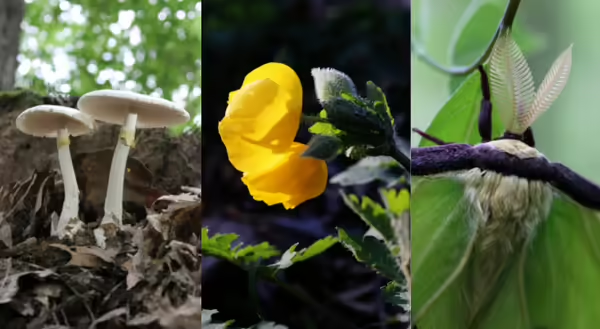
Many nature lovers take photos while they are out in the field. But not all of them come away with quality photographs. Why do some individuals always seem to get the best shots? And what are they doing that you might not be? Read more to discover five ways to bring new life to your photographs.
- Think like a naturalist.
The first tip might surprise you, but it is a good reminder for all of us taking nature photos. Naturalists have learned about the land and its inhabitants so they understand where they are likely to find certain plants or animals and what season to go looking for certain species. You can capture better images of things you understand. Knowing your subject’s habits will help you predict shots.
Haven’t had any training? Not a Master Naturalist? Contact your local Illinois Extension office to learn how you too can learn all about your more-than-human community.
- Take lots of photos.
Too often when we take photos, we take a shot of a subject, maybe two, and move on to the next subject and then the next. When shooting, take your time with the subject, explore what makes it unique. If someone said take a photo of an oak tree, most would go out and take a snapshot of the tree and be happy with that. Amateur photographers may take a couple more shots. Photographers from National Geographic would go out and take photos from every angle, at different times of day to see how the light changed. They would take shots with flash and without, different filters like neutral density and circular polarizing. Try handheld long exposures, different settings, etc., and then come back another day to see how things changed.
- Change your perspective.
Far too often, we view the world that is directly in front of us and neglect to see the bigger picture (pun intended). Try getting down low or pointing your camera high. If safe, walk around your subject to look at it from all angles, you might just see something better than the initial view. If you always shoot a wide-angle type of shot, try close-up. Take a lot of horizontal photos? Try shooting vertical.
- Pay attention to the quality of the light.
Photography literally means “light writing” and the quality of your light can make or break your image. In general, morning and evening light will give you better results than midday. The angle of the sun at those times of day helps to eliminate harsh shadows. Light can provide an element of emotion to the scene and change the feeling of the image by affecting the color of your image. Pay attention to the way shadows are cast and look for contrast in the scene. I am particularly fond of backlit subjects - leaves, flower petals. There is something about the glow and level of detail that appeals.
- Look for lines, patterns, and textures.
These design elements can make your photo go from ok to wow. Seeing patterns, like seeing light, is something you can train your eye to do. One way to help your eyes to do this is to give yourself an assignment. One day, go out and shoot all of the “S” curves you can find, another day parallel lines, and the next day, horizontal lines in series of threes. Once you have done this, you will start seeing patterns that others miss.
- Bonus Tip: Slow down.
Moving slowly, with intention, allows you to take in a scene from all directions leading you to notice more. And it has an added bonus, especially if you like to take photos of animals and birds. Staying quiet, moving slowly helps animals to feel more comfortable with your presence, allowing you to see them for longer periods of time and to experience them in their home.
Photo credit: Chris Evans.
Want to get notified when new Naturalist News posts are available? Sign up here!
MEET THE AUTHOR: Wendy Ferguson coordinates the Master Gardener and Master Naturalist programs in Henderson, Knox, McDonough and Warren Counties. Wendy earned a BS in Environmental Studies from Eureka College and a MS in Environmental Studies with an emphasis on writing and communication from Green Mountain College. She is interested in facilitating a deeper connection to place for community members through nature journaling and education. She is also an author for the Naturalist Notebook blog.
ABOUT THE BLOG: Naturalist News is a blog by University of Illinois Extension Master Naturalist staff and volunteers who bring you stories highlighting the individuals, places, wildlife and plants that make this state amazing. Join us each week to learn something new, be inspired and become connected to your own community by recognizing the amazing ways we are all intertwined.